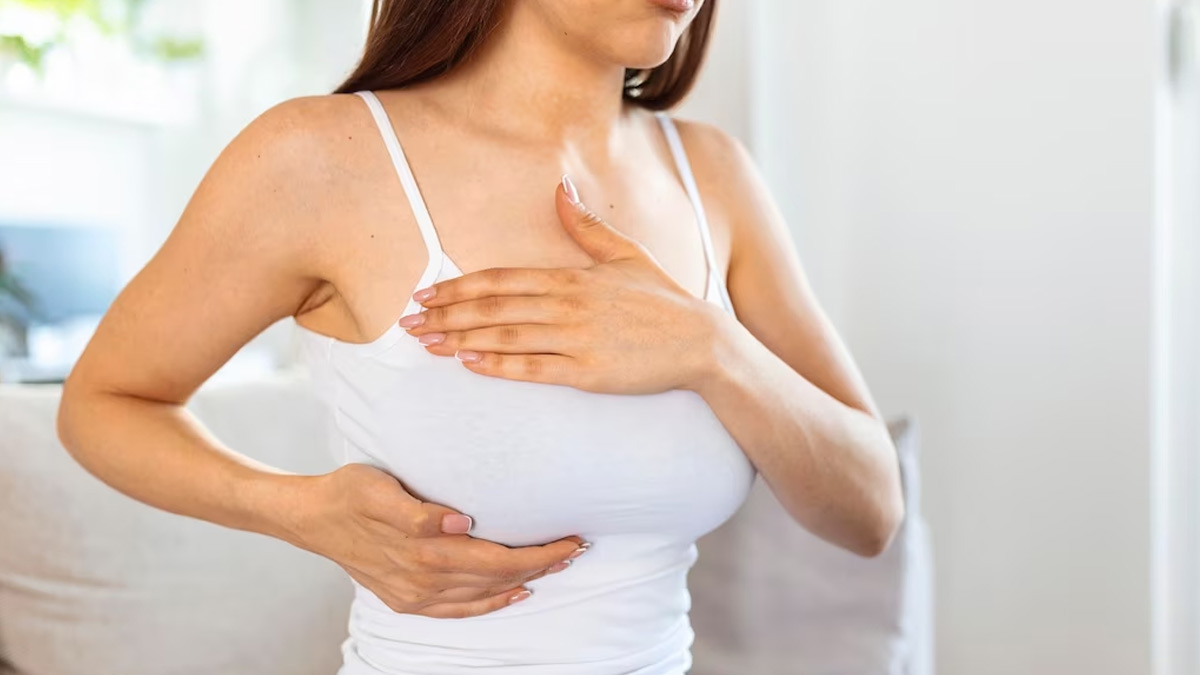
October is Breast Cancer Awareness Month and in order to raise awareness around the disease, it has also been designated as the Pink Month. The event is celebrated to show support to those who have been diagnosed with, are battling, or recovering from breast cancer as well as to educate people around the importance of early detection and symptoms of the disease.
Table of Content:-
In this article, we will be discussing one of the major risk factors of breast cancer, how it can be identified, and ways we can tackle it. In an interaction with the OnlyMyHealth team, Dr N Sapna Lulla, Lead Consultant - Obstetrics & Gynaecology, Aster CMI Hospital, Bengaluru, sheds light on the same.
Also Read: Rare, But Men Can Also Develop Breast Cancer: Expert Shares Who Is At Risk And Warning Signs
‘Women With Dense Breasts Have A Higher Risk Of Getting Breast Cancer’

According to Dr Lulla, the more dense your breasts are, the higher is your risk for breast cancer.
“Nearly 50% of women after the age of 40 have tender breasts. It is because people with the highest density are 4-6 times more likely to get breast cancer than people with the least dense breasts,” the doctor notes, explaining, “This is because glandular tissue is more likely to develop cancer.”
While the advantages of extra imaging tests like ultrasound or MRI for breast cancer screening in women with dense breasts are uncertain, according to the Breast Cancer Screening Recommendation Statement, it's crucial to discuss with a healthcare professional who can determine the most suitable diagnostic approach based on your individual medical and family history, says the National Cancer Institute.
What Do Dense Breasts Mean?

Explaining in detail what ‘dense breasts’ mean, Dr Lulla says, “Breast density reflects the amount of fibrous and glandular tissue in a woman’s breasts compared with the amount of fatty tissue in the breasts, as seen on a mammogram.”
“When there’s more glandular and fibrous tissue than fatty tissue, your breast is considered dense. The breasts are almost entirely fatty (about 10% of women) and the breasts are extremely dense (about 10% of women). The density of your breasts can change over time and there are a few causes: Generally, you’re more likely to have dense breasts if you are younger, are pregnant or are breastfeeding taking hormone replacement therapy and have a lower body weight,” he adds.
Challenges Posed By Dense Breasts
According to Dr Lulla, the only way to know if you have dense breasts is through a mammogram report shared by a radiologist.
Ideally, your breasts are made of glandular, connective and fatty tissue. In general, dense breasts have more glandular and fibrous tissue and less fatty tissue, which can sometimes make it difficult to see potential cancer on mammograms, says the doctor.
Unfortunately, dense breast tissue is said to contribute to higher breast cancer incidence and mortality rates, urging new considerations for breast cancer screening in women with dense breasts, according to a study published in the Journal RadioGraphics.
In addition, the study further suggests that women with dense breasts have breast cancers that are "larger, more likely to be assigned to a higher stage and to have nodal metastasis, more often treated with mastectomy, and twofold more likely to cause death".
Also Read: Breast Cancer Vs. Breast Cysts: How To Distinguish Between The Lumps?
What To Do?

Managing breast cancer risk with dense breasts involves proactive steps and regular monitoring.
Mammography remains a crucial tool for detecting breast cancer in dense breast tissue. Some women with very dense breasts may benefit from additional imaging. However, it is best to discuss the options with your doctor.
Ensure that you perform regular breast self-exams to become familiar with your breast tissue.
Assess other risk factors, such as a family history of breast cancer, which can impact your risk.
Most importantly, maintain a healthy lifestyle by eating a balanced diet, engaging in regular physical activity, maintaining a healthy weight, limiting alcohol consumption, and not smoking. These practices can help reduce overall cancer risk.
Also watch this video
How we keep this article up to date:
We work with experts and keep a close eye on the latest in health and wellness. Whenever there is a new research or helpful information, we update our articles with accurate and useful advice.
Current Version